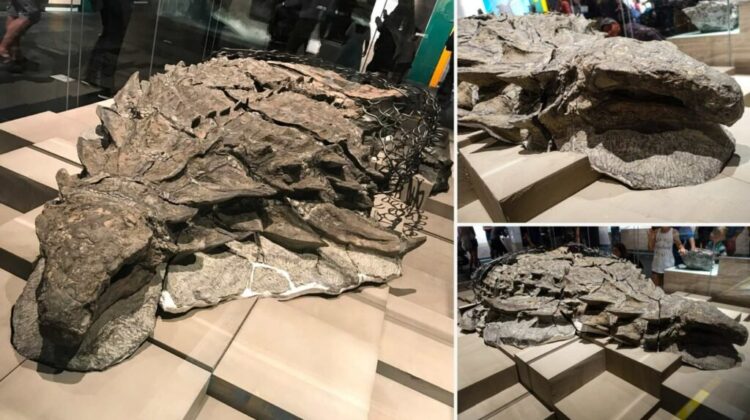
In a remarkable twist of fate, miners in Canada stumbled upon a discovery that has sent shockwaves through the scientific community: a ‘Dinosaur Mummy’ so impeccably preserved that it offers a rare glimpse into prehistoric life, with skin and guts intact.
“We don’t just have a skeleton,” exclaimed one researcher involved in the project. “We have a dinosaur as it would have been.”
This extraordinary specimen, hailed as the best-preserved dinosaur ever unearthed, defies conventional expectations. Unlike typical fossils, its bones remain obscured beneath layers of remarkably well-preserved skin and armor.
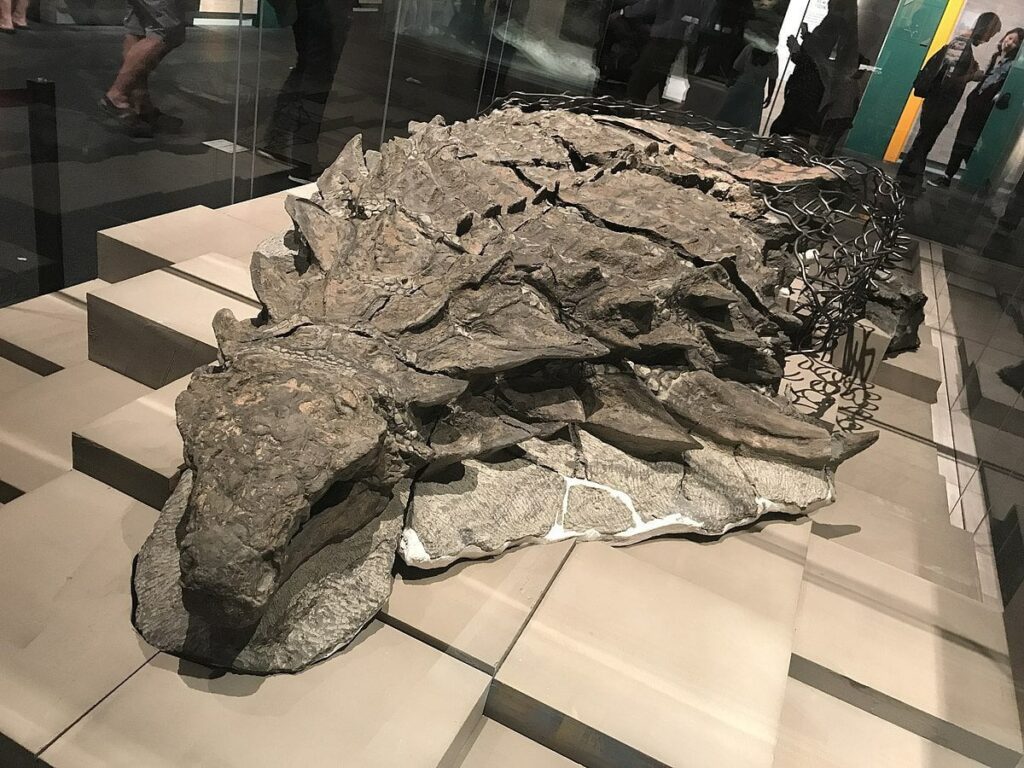
Accidentally unearthed by miners in Canada, this fossilized nodosaur boasts an age exceeding 110 million years. Yet, remarkably, intricate patterns still adorn its skin, prompting scientists to liken it to a ‘dinosaur mummy.’
The Royal Tyrrell Museum of Palaeontology in Alberta, Canada, which unveiled this astonishing find, describes it as a once-in-a-lifetime discovery. The creature’s unprecedented level of preservation, with intact skin, armor, and even portions of its internal organs, has left researchers astounded.
“You don’t need to use much imagination to reconstruct it,” remarked one researcher. “If you just squint your eyes a bit, you could almost believe it was sleeping.”
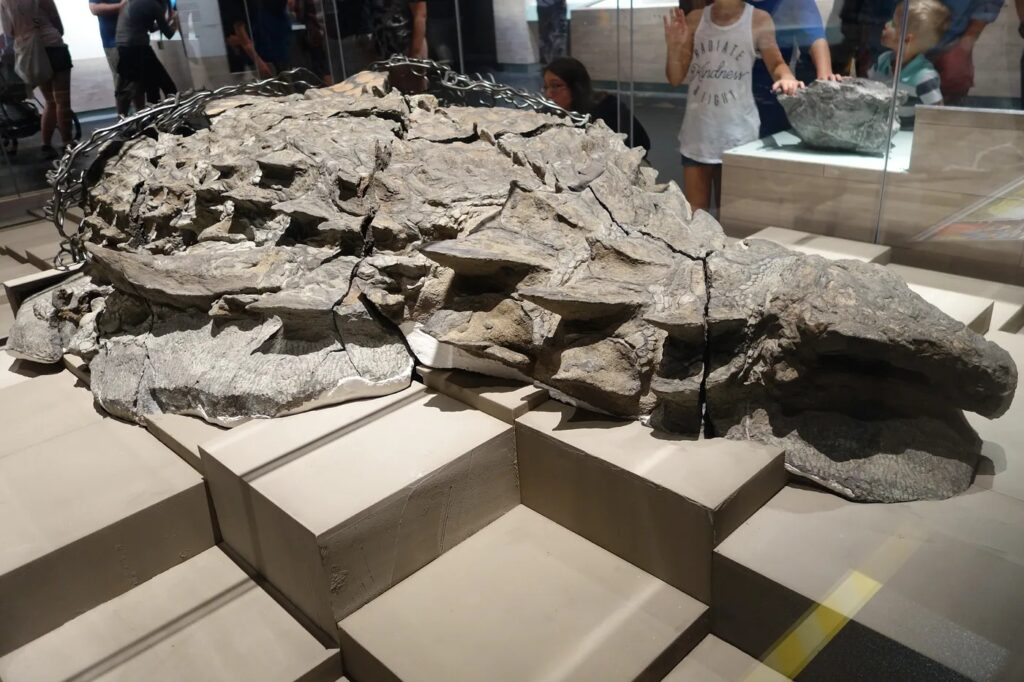
Previously, only nodosaur skeletons had been unearthed, offering a glimpse of their formidable armored appearance. But this nodosaur, a member of a newly discovered species, Borealopelta markmitchelli, is a true marvel of preservation.
Weighing an estimated 3,000 pounds in life, the mummified nodosaur still retains much of its original weight, a testament to the remarkable state of preservation it has undergone over millions of years.
Researchers speculate that the nodosaur may have met its fate in a flooded river, carried out to sea where it eventually sank to the ocean floor. Over time, minerals may have settled on its body, preserving it in astonishing detail.
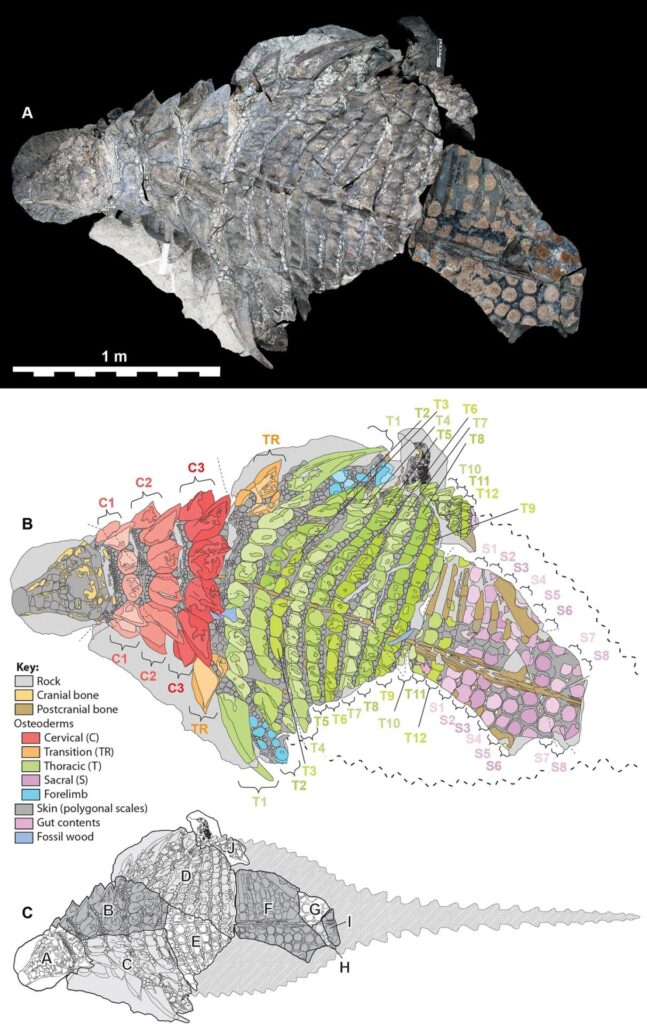
Named in honor of technician Mark Mitchell, who painstakingly excavated the fossil over thousands of hours, Borealopelta markmitchelli offers more than just physical preservation. Through cutting-edge mass spectrometry techniques, researchers have discerned the creature’s original skin color, shedding light on its evolutionary adaptations.
The discovery of this heavily-armored herbivore underscores the perilous environment in which it lived, evoking images of the formidable predators that once roamed the Earth.
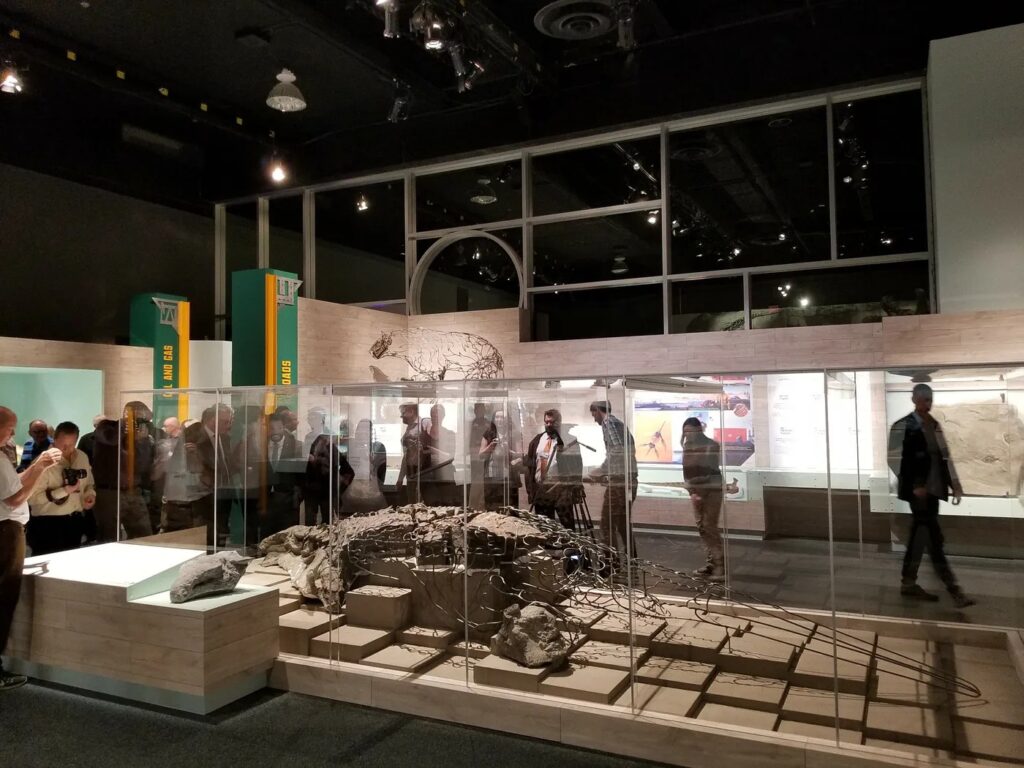
Uncovered by an unsuspecting excavator operator in an oil sands mine, the journey of the nodosaur from ancient burial ground to public display has captivated audiences worldwide. Its three-dimensional preservation, retaining the original shape of the animal, further cements its status as a scientific marvel.
As one researcher aptly puts it, this remarkable specimen will forever be enshrined in scientific history as the “Mona Lisa of dinosaurs,” a testament to the enduring mysteries and wonders of our planet’s distant past.

Leave a Reply